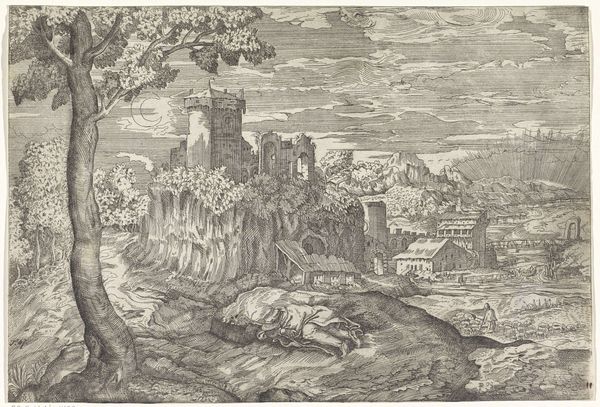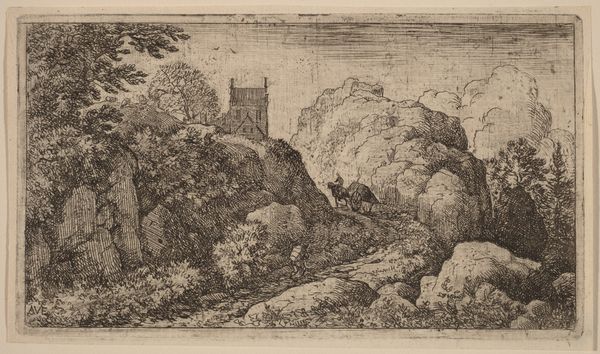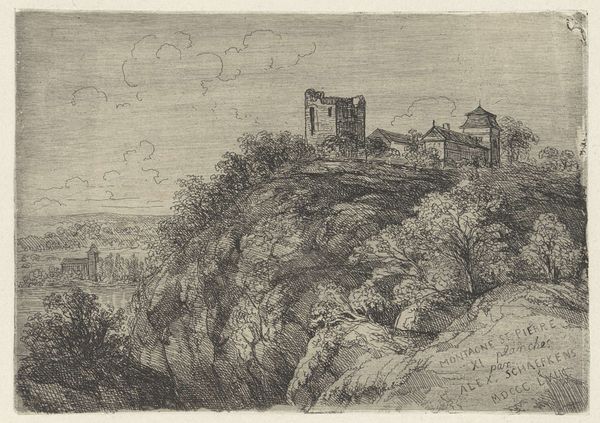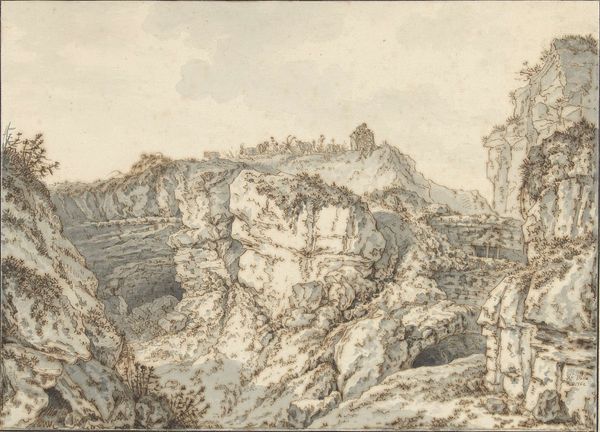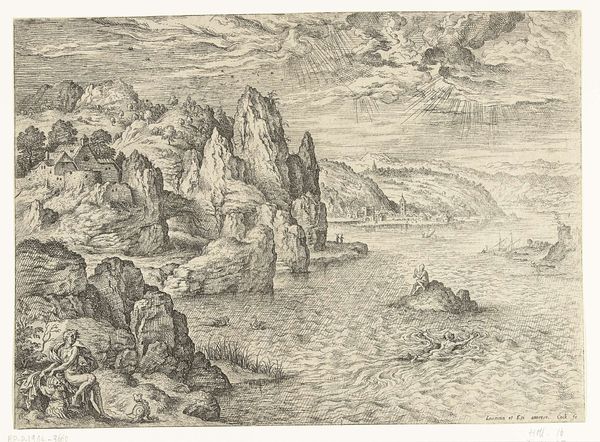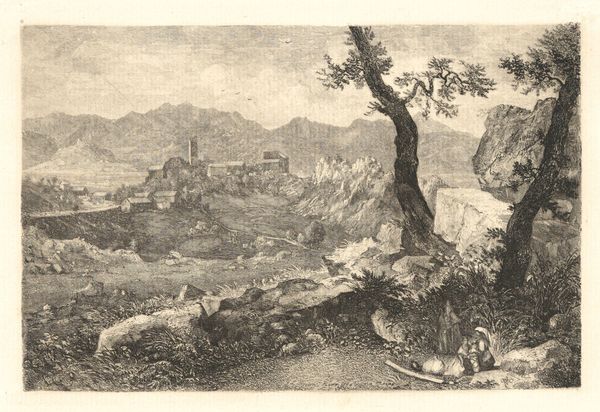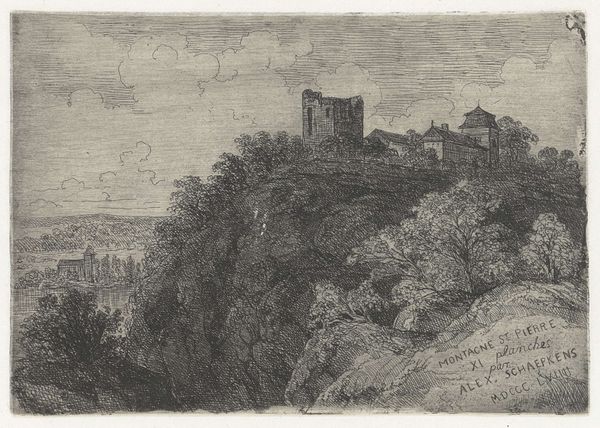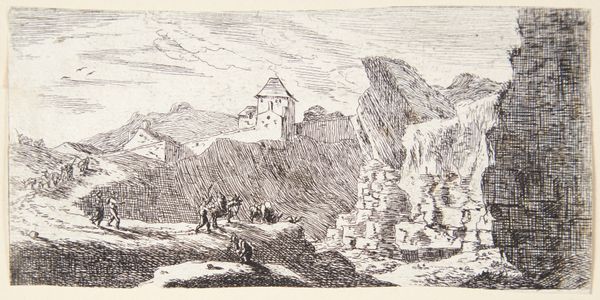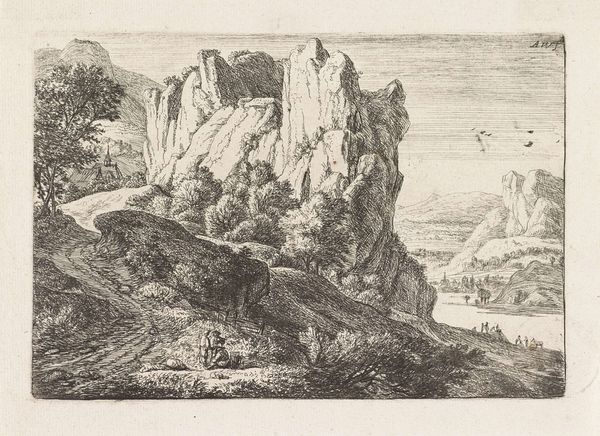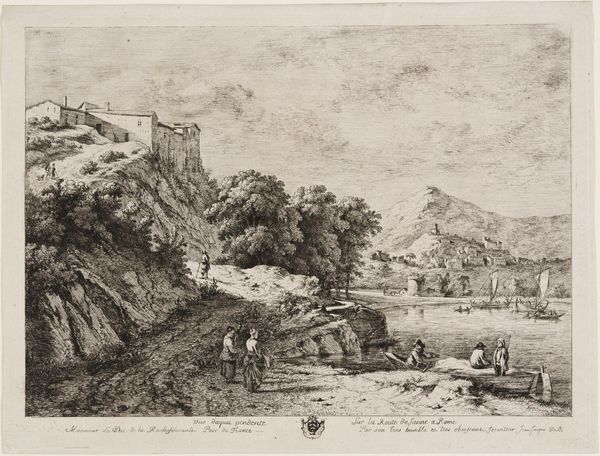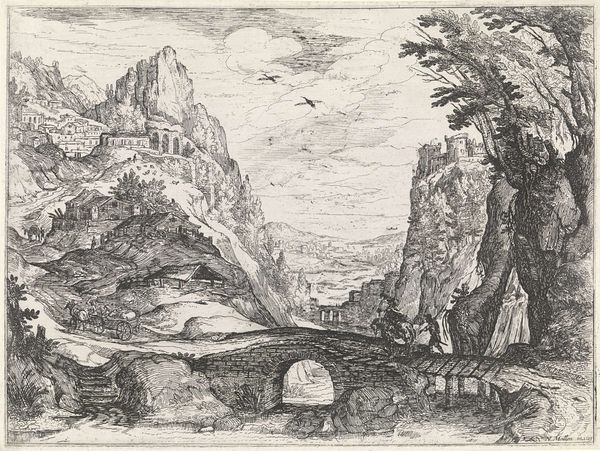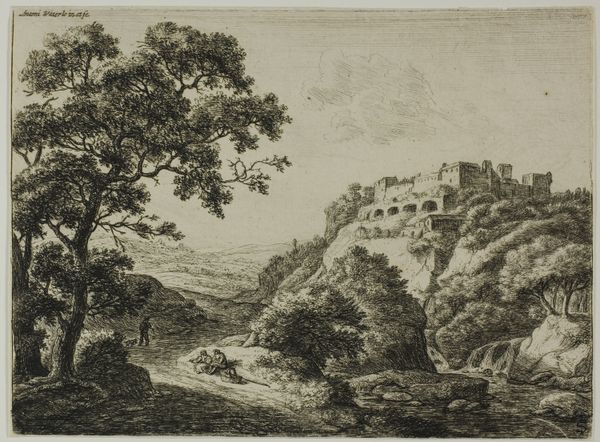
drawing, print, etching, paper
#
drawing
# print
#
etching
#
landscape
#
paper
#
history-painting
#
northern-renaissance
Dimensions: 311 × 426 mm
Copyright: Public Domain
Editor: This etching, "Saint Jerome in the Desert," made around 1553 by Hieronymus Cock, pulls you in with its intricate details. What strikes me most is the contrast between the wild landscape and the tiny, almost hidden figure of Saint Jerome. What do you see in this piece? Curator: Immediately, I'm drawn to the symbolic weight of the desert itself. It represents a space of trial, purification, and revelation. Jerome's withdrawal isn't just physical; it's a psychological and spiritual journey. Notice how Cock positions the saint dwarfed by the landscape. He is at once a part of and separate from that immensity, suggesting both his connection to the natural world and his struggle within it. Editor: That makes sense. The desert as a metaphor for inner turmoil. But what about the city visible in the distance? How does that fit into the narrative? Curator: The city offers a fascinating counterpoint. It's a reminder of the world Jerome has left behind, the world of earthly concerns. Its presence creates tension. Is Jerome truly escaping, or is the city, and all it represents, still within reach, a temptation perhaps? The symbols and composition underscore Jerome's profound isolation. His very pose embodies a deep moment of introspection, surrounded by visual reminders of both earthly temptation and divine possibility. Editor: So, the landscape itself isn't just scenery; it's a language, a way of conveying Jerome's inner state. I didn't consider that before. Curator: Exactly! And understanding that visual language unlocks a deeper understanding of the artist's intent, which provides cultural context, as well as individual memory of contemplation versus isolation in harsh nature. Editor: I will definitely keep that in mind when looking at art from now on. I will not overlook the symbolism to create a bridge to memory, culture, and art's purpose.
Comments
No comments
Be the first to comment and join the conversation on the ultimate creative platform.
